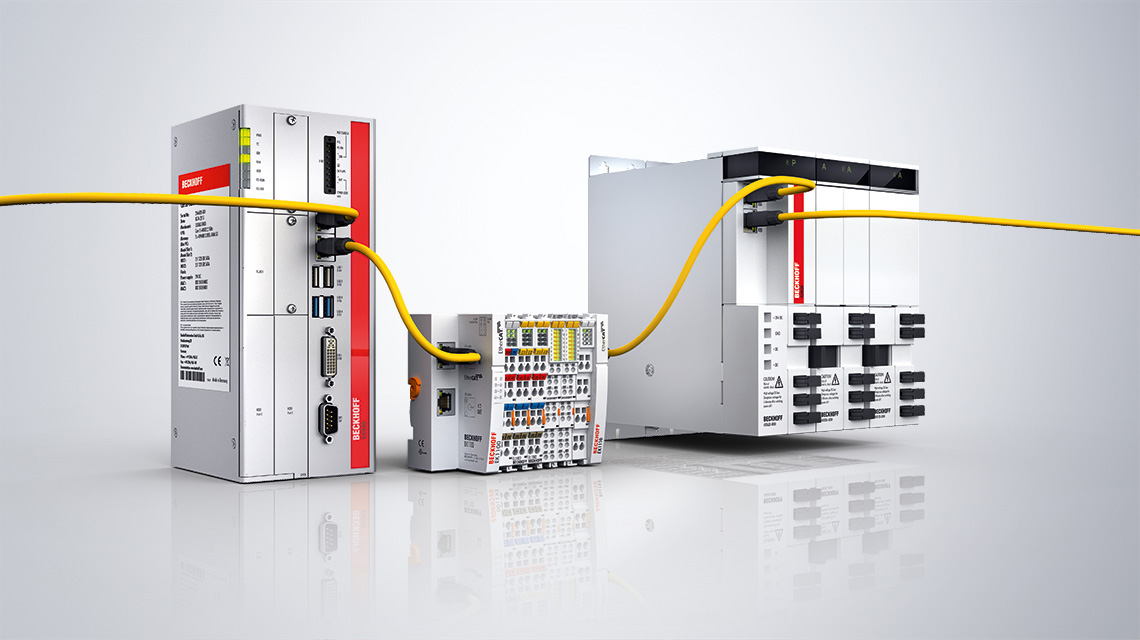Posted on 14th Feb 2025

In the realm of industrial automation and motion control, the integration of Variable Frequency Drives (VFDs) with motion control systems is crucial for achieving precision, efficiency, and reliability. One such integration that stands out is the Darwin Motion EtherCAT VFD system. This article provides a deep dive into the technology behind it, its key features, and its applications in modern industrial environments.
EtherCAT (Ethernet for Control Automation Technology) is a high-performance industrial Ethernet protocol developed to offer real-time communication for control systems. It stands out in automation because of its speed, efficiency, and scalability, making it ideal for complex motion control and distributed systems. The primary advantage of EtherCAT over other Ethernet-based protocols is its ability to transfer data quickly and with low latency, thanks to its unique "on-the-fly" data processing mechanism.
A Variable Frequency Drive (VFD) is an electronic device that controls the speed and torque of an electric motor by adjusting the frequency and voltage supplied to the motor. VFDs are widely used in industrial automation systems to control the motion of machines and systems. By adjusting the motor speed, they offer energy efficiency, reduce mechanical stress, and ensure smoother control of motion.
VFDs are particularly essential in scenarios where precise control of motor operations is needed, such as in robotics, conveyor systems, and CNC machines.
Darwin Motion EtherCAT VFD: Key Features and Benefits
The Darwin Motion EtherCAT VFD represents a cutting-edge solution that combines EtherCAT's real-time data communication capabilities with the precision and efficiency of VFD control. Here are some of the key features and benefits:
The Darwin Motion EtherCAT VFD allows for real-time communication between motion controllers and drives, enabling precise synchronization across multiple devices. The ability to operate in real-time is essential for applications that demand high-performance control, such as robotics and automated manufacturing lines.
EtherCAT's efficiency in transmitting data is enhanced in the Darwin system. The protocol's low latency ensures that motion control commands are sent almost instantaneously, allowing for fast responses to changing conditions. This is critical in applications where speed and accuracy are paramount.
EtherCAT's architecture supports a distributed control network, which allows various devices (motors, sensors, controllers) to be connected through a single network, minimizing wiring complexity and enhancing system reliability. The Darwin Motion EtherCAT VFD uses this architecture to ensure that control over each motor is seamless and distributed, reducing bottlenecks and improving scalability.
The system's scalability means it can easily accommodate small-scale systems with a single motor, as well as large-scale systems with multiple motors working in synchronization. This makes it suitable for a wide range of industries, from small workshops to massive production lines.
VFDs are known for their energy-saving capabilities, and when combined with EtherCAT motion control systems, they offer enhanced energy optimization. By adjusting the motor speed and optimizing the load, the Darwin Motion EtherCAT VFD ensures that energy consumption is kept to a minimum without sacrificing performance.
The Darwin Motion EtherCAT VFD integrates diagnostics and monitoring capabilities that provide real-time feedback on system performance. This helps operators identify issues early, perform preventive maintenance, and avoid costly downtime.
The system supports advanced motion control algorithms, which enable precise control over the acceleration, deceleration, and positioning of motors. This is particularly beneficial in applications that require high precision, such as 3D printing, laser cutting, and automated assembly.
The versatility and performance of the Darwin Motion EtherCAT VFD make it suitable for a wide range of applications across various industries, including:
In manufacturing environments, where precise control over machines like conveyor belts, robotic arms, and CNC machines is crucial, the Darwin Motion EtherCAT VFD provides the necessary synchronization and control, leading to better throughput and less downtime.
Robotics applications demand precise motion control for tasks like picking, placing, and assembling. The EtherCAT VFD's ability to control the speed and torque of motors with high accuracy makes it a perfect fit for robotic systems.
In packaging automation, speed and accuracy are key. The Darwin Motion EtherCAT VFD helps control the movement of packaging machines with optimal precision, reducing errors and improving overall production efficiency.
VFDs are commonly used in HVAC systems, pumps, and fans to optimize energy consumption. The integration of EtherCAT allows for more efficient communication between different devices, helping to further optimize the system's overall performance.
The Darwin Motion EtherCAT VFD represents a leap forward in motion control technology, combining the speed and efficiency of EtherCAT with the versatility of VFDs. By offering real-time communication, high-speed data transfer, and scalable control, this system provides significant benefits in industrial applications, from energy efficiency to enhanced precision. Its flexibility and advanced features make it a valuable solution for industries ranging from robotics to automated manufacturing.
As industries continue to demand smarter, faster, and more energy-efficient systems, the Darwin Motion EtherCAT VFD is poised to be a key player in the future of motion control automation.